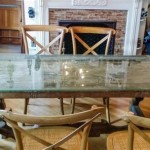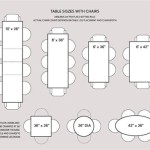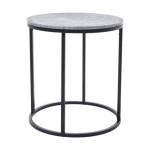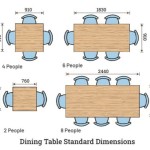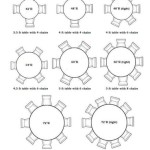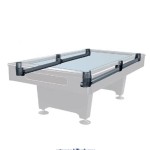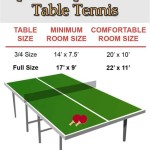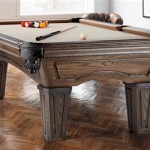The Allure and Practicality of a Mirrored Round Dining Table
The mirrored round dining table has emerged as a compelling focal point in modern interior design. Its reflective surface introduces an element of glamour and sophistication while simultaneously enhancing the perception of space and light within a room. This article delves into the various aspects of mirrored round dining tables, exploring their design considerations, functionality, care requirements, and suitability for different interior styles.
The appeal of a mirrored surface lies in its ability to manipulate the visual dynamics of a space. The reflection of light and surrounding objects creates an illusion of greater depth, making smaller rooms feel more spacious and airy. In addition, the reflective quality adds a touch of elegance and luxury, elevating the overall aesthetic of the dining area.
Design Considerations for Mirrored Round Dining Tables
When considering the purchase of a mirrored round dining table, several design factors warrant careful attention. These include table size, base material, edge treatment, and the type of mirror used. Each element contributes to the table’s overall aesthetic and functionality.
The size of the dining table should be proportionate to the dimensions of the room. A table that is too large can overwhelm the space, while one that is too small may appear insignificant. A general guideline is to allow at least 36 inches of space between the edge of the table and any surrounding walls or furniture. This ensures comfortable movement around the table and prevents a cramped feeling.
Round tables typically offer more seating flexibility compared to rectangular tables. The absence of corners allows for more individuals to be comfortably accommodated. However, it's crucial to consider the diameter of the table and the number of people who will typically be dining. A diameter of 48 inches is generally suitable for seating four people comfortably, while a 60-inch diameter can accommodate six to eight individuals.
The base material of a mirrored dining table significantly impacts its style and durability. Common base materials include metal, wood, and acrylic. Metal bases, often finished in chrome, stainless steel, or brass, provide a sleek, modern look. Wood bases, on the other hand, offer a warmer, more traditional aesthetic. Acrylic bases are a contemporary option that can create a floating effect, further enhancing the reflective qualities of the table.
The edge treatment of the mirror is another critical design aspect. Common options include beveled edges, which add a touch of elegance and sophistication, and straight edges, which offer a more minimalist and contemporary look. The edge treatment also affects the safety of the table. A well-finished edge is essential to prevent chipping or sharp edges.
The type of mirror used also affects the table's appearance and durability. Standard glass mirrors are the most common and cost-effective option. However, they are susceptible to scratches and damage. Tempered glass mirrors are more durable and shatter-resistant, making them a safer choice, especially in households with children or pets. Antique or distressed mirrors can add a vintage or eclectic touch to the dining area.
Functionality and Practical Applications
Beyond its aesthetic appeal, a mirrored round dining table offers several functional benefits. Its reflective surface can brighten a room by reflecting natural and artificial light. This is particularly useful in smaller dining areas or rooms with limited natural light. The illusion of increased space created by the mirror can also make a room feel less confined and more inviting.
The round shape of the table encourages conversation and interaction. The absence of corners allows for better eye contact and facilitates a more communal dining experience. This makes round tables ideal for entertaining guests and creating a warm, welcoming atmosphere.
Mirrored dining tables can be incorporated into a variety of interior styles. In modern or contemporary settings, a table with a sleek metal base and a straight-edged mirror can complement clean lines and minimalist décor. In more traditional settings, a table with a wooden base and a beveled mirror can add a touch of elegance and formality. Mirrored tables can also be used to create a dramatic statement in eclectic or glamorous interiors.
When incorporating a mirrored table into a dining space, it is important to consider the surrounding décor. A mirrored table reflects everything in the room, so it is essential to ensure that the surrounding elements are aesthetically pleasing. Consider using complementary colors and textures to create a cohesive and harmonious look. Avoid cluttering the space with too many accessories, as this can detract from the table's impact.
The reflective surface of a mirrored table can also be used to highlight other design elements in the room. For example, placing a chandelier above the table will create a dazzling reflection, adding a touch of drama and glamour to the dining area. Similarly, incorporating artwork or decorative items with reflective surfaces can enhance the overall aesthetic.
Care and Maintenance of Mirrored Dining Tables
Maintaining a mirrored round dining table requires regular cleaning and care to preserve its reflective surface and prevent damage. The key is to use gentle cleaning products and avoid abrasive materials that can scratch the mirror.
Regular dusting is essential to remove any dust or debris that can accumulate on the surface of the mirror. Use a soft, lint-free cloth to gently wipe the surface. Avoid using paper towels, as they can scratch the mirror.
For cleaning fingerprints or smudges, use a glass cleaner specifically designed for mirrors. Spray the cleaner onto a clean, soft cloth and gently wipe the surface in a circular motion. Avoid spraying the cleaner directly onto the mirror, as this can cause streaks or damage the edges. Always dry the surface with a clean, dry cloth to prevent water spots.
Avoid using abrasive cleaners or scouring pads, as these can scratch the mirror. Similarly, avoid using harsh chemicals, such as ammonia or bleach, as they can damage the reflective surface.
Protect the mirror from scratches and dents by using placemats and coasters. These will prevent accidental damage from objects placed on the table. Avoid placing hot dishes directly onto the mirror, as this can cause cracks or discoloration. Use trivets or heat-resistant mats to protect the surface.
For spills, wipe them up immediately to prevent staining or damage to the mirror. Use a clean, damp cloth to wipe the spill, and then dry the surface with a clean, dry cloth.
If the mirror becomes chipped or cracked, it is essential to repair it promptly to prevent further damage. Contact a professional glass repair service for assistance. Attempting to repair the mirror yourself can be dangerous and may result in further damage.
The base of the table also requires regular maintenance. Metal bases should be cleaned with a soft cloth and a mild detergent. Wood bases should be cleaned with a furniture polish designed for the specific type of wood. Acrylic bases can be cleaned with a glass cleaner and a soft cloth.
By following these care and maintenance tips, you can ensure that your mirrored round dining table retains its beauty and functionality for years to come.

Acme Furniture Nie 52 In Round Clear And Mirrored Glass Top Dining Table With Wood Frame Seats 6 72960 The Home Depot

Rylan Mirrored Round Table

Ikon Mirrored Round Dining Table

Custom Round Mirrored Dining Table For At 1stdibs Room And Chairs

Silvertone Round Mirrored Dining Table

Beaumont Lane Mirrored Round Dining Table

Best Master Furniture Oswald 60 In Glass Silver Mirrored Round Dining Table T1803st The Home Depot

Seibel Mirrored Round Dining Table

Custom Round Mirrored Dining Table Mirror Room

Borghese Single Pedestal Dining Table With 60 Glass Round Top By Bassett Mirror

